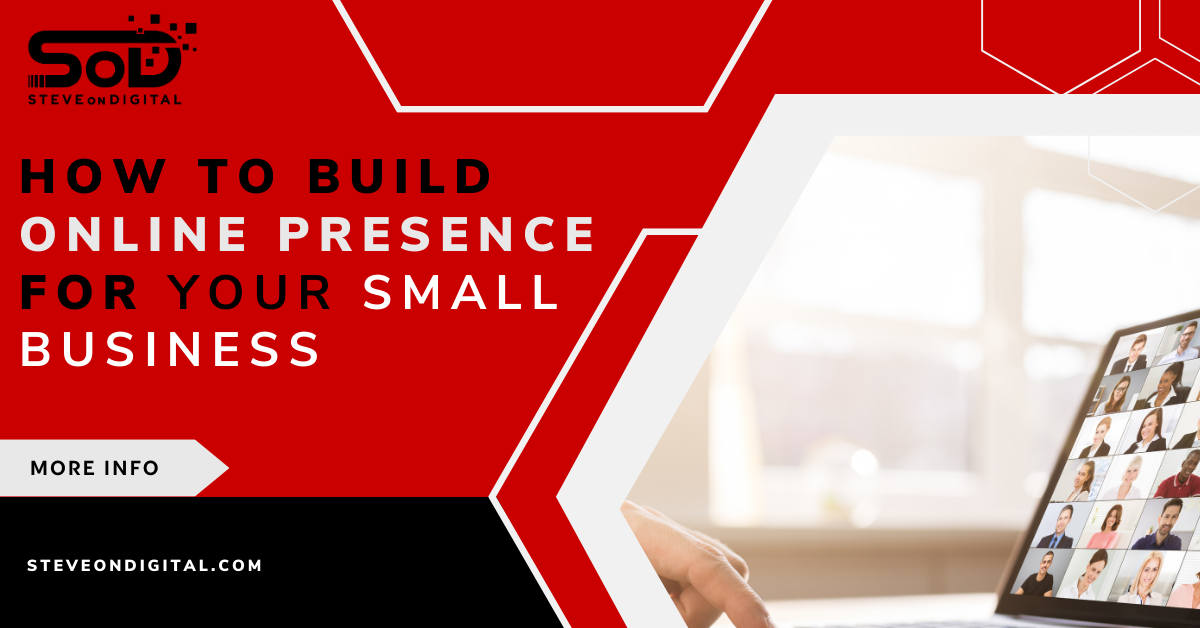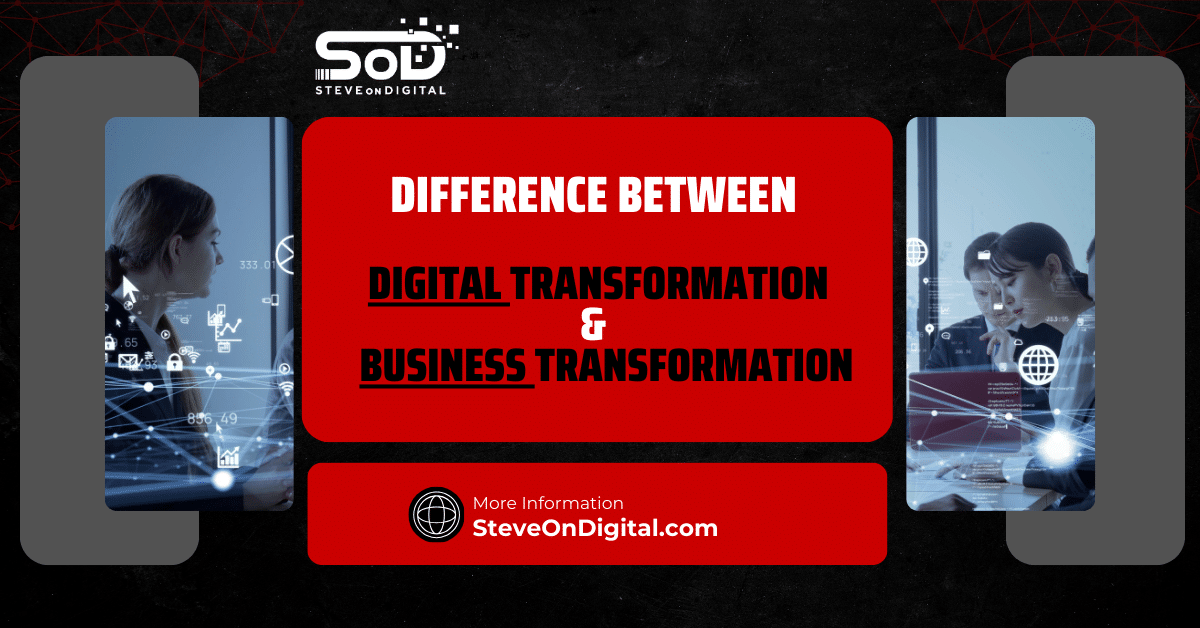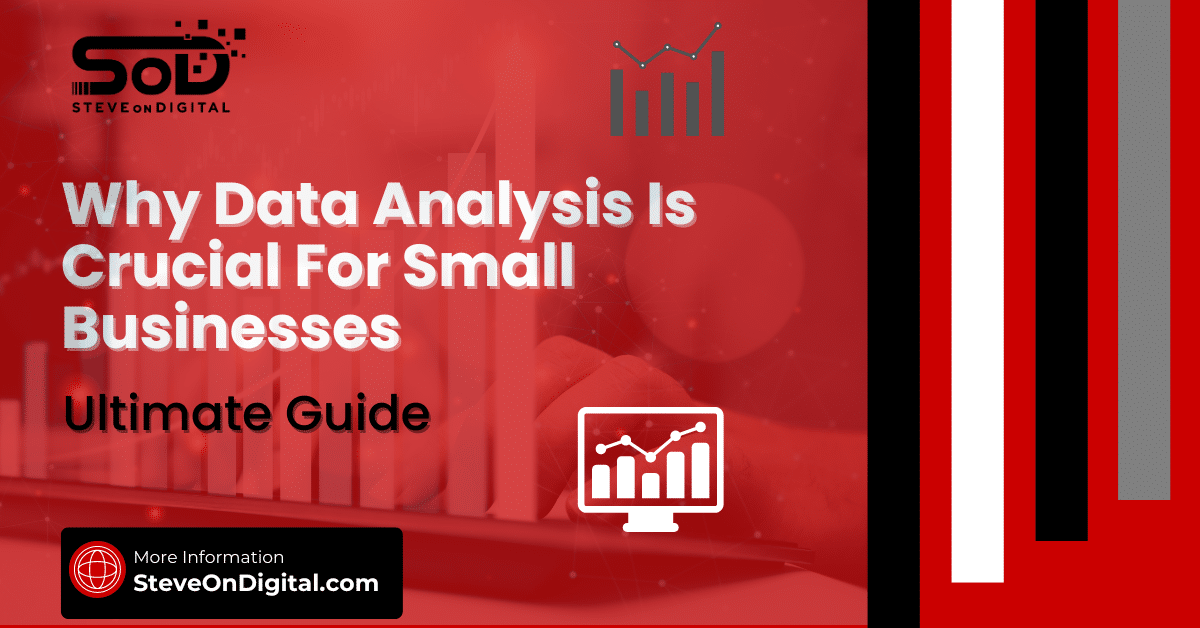As a small business owner and a digital transformation specialist, I understand the paramount importance of a strong online presence in today’s competitive market.
An effective online presence isn’t just about having a website; it’s a multifaceted strategy that includes search engine optimization (SEO), an active social media presence, and a comprehensive Google Business Profile.
In this blog, I’ll share insights and strategies that have helped countless small businesses thrive online.
The Critical Role Of A Strong Online Presence
In the digital age, the first interaction a potential customer often has with a business is online.
This could be through a Google search, a mention on social media platforms, or through online listings.
In simpler words, having a good presence online means more people will see you, know who you are, and trust you.
Statistics show that about 97% of consumers rely on the web to find local businesses, making an online footprint essential for attracting new customers.
Overview Of Key Strategies
To effectively capture the attention of your target audience, you need a cohesive strategy that intertwines SEO, active engagement on social media channels, and a robust Google Business Profile.
Each element plays a critical role in how your brand online is perceived and how effectively you can attract more customers.
| Component | Description | Importance |
| Website | Central hub for your business information and customer engagement. | Essential for credibility and customer conversion. |
| SEO | Techniques to improve visibility on search engines. | Drives organic traffic and enhances visibility. |
| Google Business Profile | Tool for managing business info on Google Search and Maps. | Vital for local SEO and customer interaction. |
| Social Media | Platforms for engaging with customers and sharing content. | Increases brand awareness and fosters connections. |
Developing A Strong Online Presence
Creating A User-Friendly Website
Importance Of Professional Sites
For small businesses, the website acts as the hub of all digital activity.
It is where potential customers come to learn more about your services and products.
From personal experience, I found that a well-designed website significantly boosts customer confidence and helps convert visitors into customers.
A study by Stanford found that 75% of users admit to making judgments about a company’s credibility based on its website’s design.
Essential Features
With over 50% of global website traffic coming from mobile devices, having a mobile-friendly website is no longer optional; it’s imperative.
Additionally, the website should be easy to navigate and have fast load times, which Google considers hugely important for ranking in search engine results.
Optimizing For Search Engines
Boosting Traffic And Visibility Through SEO
SEO helps your business appear in search engine results when potential customers search for relevant keywords.
For instance, incorporating phrases like online presence for small business and local business SEO strategies can significantly enhance your visibility and attract more potential customers.
Practical SEO Tips
To optimize your SEO efforts, focus on local keywords, maintain updated online listings, and ensure your site has quality backlinks from reputable other sites.
Moreover, regularly updating content with useful information can also boost your rankings and keep your audience engaged.
| SEO Task | Description | Frequency |
| Keyword Research | Identify relevant keywords based on user search patterns. | Quarterly |
| Content Updates | Refresh old content and add new posts to engage and inform visitors. | Monthly |
| Backlink Audit | Review and seek quality backlinks to boost site authority. | Bi-annually |
| Local SEO Optimization | Ensure local listings are updated and accurate. | As needed |
Enhancing Your Google Business Profile
Setup And Optimization Guide
Creating and optimizing a Google Business Profile is vital for local businesses.
This tool helps businesses control what people see about them on Google Search and Maps.
Ensure your business information is accurate, add photos of your products or storefront, and encourage customers to leave positive reviews.
Utilizing Google Tools For Local Engagement
Utilizing tools like Google Posts can help you drive more traffic.
You can post updates, offers, and events, which appear directly in the search and maps results, making it easier to engage with current and potential customers.
Leveraging Social Media For Brand Growth
As the digital landscape evolves, social media presence becomes an essential part of a strong online presence for small businesses.
Harnessing the power of social media platforms effectively can significantly increase brand awareness and foster relationships with both current and potential customers.
Based on my experience as a small business owner and digital specialist, I’ve seen firsthand how a strategic approach to social media can transform business outcomes.
Choosing The Right Platforms
Identifying Suitable Social Media Channels
Not all social platforms are suitable for every business.
It’s crucial to select platforms that align with your brand online and where your target audience spends their time.
For small businesses, it often means focusing on where you can make the most impact with your resources.
Demographics Of Facebook, Instagram, LinkedIn
- Facebook: A versatile platform with a broad demographic. Ideal for businesses looking to engage with a wide range of users, from young adults to older generations. As of the latest stats, Facebook users encompass over 2.8 billion people globally, making it a powerhouse for brand online visibility.
- Instagram: This platform is great for visually-driven content and reaches a younger demographic. Instagram users are highly engaged, making it perfect for brands looking to showcase products or share visual stories.
- LinkedIn: Best suited for B2B companies. It helps establish professional credibility and engage with industry leaders, which is crucial for business networking and partnership opportunities.
| Platform | Audience Characteristics | Best For |
| Broad demographic, 2.8 billion users globally. | Engaging with a wide range of customers. | |
| Younger audience, high engagement with visual content. | Showcasing products and visual storytelling. | |
| Professional users, B2B interactions. | Networking with industry professionals. |
Managing Social Media Accounts
Engaging Content Creation For Platforms
Each platform requires a unique approach to content.
For example, Instagram thrives on high-quality visuals and short stories, while Facebook may allow for longer posts and more detailed updates.
As a rule, all content should be crafted to inform, entertain, or solve a problem, which encourages more engagement.
Regular Engagement Strategies
Regular updates keep your social media presence vibrant and engaging.
Here are a few strategies I’ve employed successfully:
- Posts: Share insights, product news, or behind-the-scenes content regularly to keep your audience interested and engaged.
- Direct Messages: Use this feature to provide excellent customer service. Answering queries through direct messages can personalize the experience and build trust.
- Updates: Keep your followers in the loop with any changes or exciting news about your business to maintain interest and engagement.
Expanding Reach With Social Media Advertising
Introduction To Paid Social Media Strategies
Paid advertising on social media can significantly enhance your brand’s visibility.
Social media advertising allows for targeted campaigns that can directly reach your target customers, making it a cost-effective strategy.
Using Retargeting Ads For Consumer Capture
Retargeting ads are a powerful tool to engage consumers who have visited your website but haven’t made a purchase.
These ads remind them of your products or services as they browse other parts of the internet, increasing the chances of conversion.
For instance, using Facebook’s retargeting tools can help you display ads to users who have previously engaged with your content, enhancing the likelihood of them returning and becoming customers.
Enhancing Online Visibility Through Directories And Listings
In the digital age, visibility is vital for any business aiming to attract new customers and build a strong online presence.

As Steve Johnston, owner of SteveOnDigital, I’ve seen how effective online directories and listings can be for small businesses looking to increase brand awareness and drive traffic to their websites.
Let’s dive into why these tools are indispensable and how to use them effectively.
Importance Of Online Directories And Listings
Reasons To List Your Business Online
Online directories and listings play a crucial role in how potential customers find your business.
Platforms like Yelp, Google, and industry-specific directories ensure that when consumers rely on search engines to find services, your business stands out.
For instance, a complete Google Business Profile not only enhances your local SEO but also provides essential information like your business hours, location, and customer reviews, directly in the search results.
Creating Engaging Online Listings
Creating listings that capture attention and foster engagement involves more than just filling out information.
Here are some tips based on my experiences:
- Accuracy is Key: Ensure all your information is current and consistent across all platforms.
- Highlight Special Features: Whether it’s excellent customer service, unique offerings, or community involvement, make these a focal point.
- Use High-Quality Images: Visuals play a critical role in first impressions. Use clear and appealing photos to represent your business.
Content Marketing To Boost Online Presence
Developing A Reflective Content Strategy
Content marketing is more than just creating content; it’s about conveying your brand’s story and values in a way that resonates with your target audience.
This involves a strategic approach where every piece of content, from blog posts to videos, aligns with your brand’s voice and business goals.
Using Blogs, Infographics, And Videos
Blogs, infographics, and videos are powerful tools to educate your audience and keep them engaged.
Here’s how they can be integrated effectively:
- Blogs: Share insights, tips, and updates. For instance, detailed guides on using your products or services can add significant value.
- Infographics: Great for visual data representation, making complex information easy to digest.
- Videos: With the rising popularity of video content, platforms like a YouTube channel can be used to demonstrate products, share behind-the-scenes content, and more.
Building Relationships And Customer Loyalty
Customer Interaction And Engagement
Online Customer Service Best Practices
Online customer service is an integral part of maintaining a positive reputation and fostering customer loyalty.
Practices like timely responses to direct messages and phone calls, and maintaining a positive tone in all interactions can significantly impact how your brand is perceived.
Encouraging And Managing Customer Reviews
Positive reviews are gold for small businesses.
Encourage satisfied customers to share their experiences online and respond promptly and thoughtfully to all feedback.
This not only improves your credibility but also shows that you value customer input.
Community Building And Collaboration
Networking Benefits With Other Businesses
Networking with other businesses and engaging in community activities can lead to new opportunities and enhance your business’s local profile.
This could involve participating in local events, sponsoring community projects, or collaborating on promotions with other local entities.
Effective Guest Posting And Promotions
Guest posting on reputable other sites within your industry can help reach a broader audience and build relationships with peers.
Similarly, mutual promotions, such as shared discounts or bundled offers with other businesses, can attract more customers and provide mutual benefits.
Tracking And Enhancing Your Online Strategy
In the digital world, the only constant is change.
Monitoring and enhancing your online strategy is crucial for maintaining a strong online presence.
As Steve Johnston from SteveOnDigital, I’ve navigated through various trends and strategies to keep my business ahead in the digital space.
Here’s how you can measure and improve your online efforts.
Monitoring Online Performance
Tools And Metrics For Impact Assessment
To truly understand the effectiveness of your online activities, it’s essential to use the right tools.

Platforms like Google Analytics and social media analytics tools provide comprehensive insights into your website and social media performance.
These tools help track:
- Traffic: Measures the number of visitors to your site.
- Engagement: Looks at how users interact with your content, such as likes, shares, and comments on social media.
- Conversion Rates: Assesses how well your site turns visitors into customers.
Key Performance Indicators
These indicators are vital for assessing the health of your online strategy:
- Traffic shows the volume of potential customers reaching your website.
- Engagement indicates how compelling and relevant your content is to your target audience.
- Conversion rates reflect the effectiveness of your site and content in turning engagement into tangible outcomes, like sales or sign-ups.
| KPI | What It Measures | Why It Matters |
| Traffic | Number of visitors to your website. | Indicates the reach and interest level in your brand. |
| Engagement | Interactions on social media and website. | Shows how compelling and relevant your content is. |
| Conversion Rate | Visitors converting into customers. | Measures the effectiveness of your site and content. |
Adapting And Evolving With Digital Trends
Staying Competitive With Marketing Trends
The digital landscape evolves rapidly, with new technologies and consumer behaviors emerging regularly.
Staying informed about these changes ensures your strategy remains relevant and competitive.
For example, adapting to the latest SEO techniques and social media platforms can help maintain a strong online presence.
Regular Updates For Relevance And Freshness
It’s not just about keeping up; it’s about being proactive.
Regularly updating your content and strategy can keep your brand appealing to current and potential customers.
This could mean refreshing website content, optimizing SEO strategies, or experimenting with new social media channels.
Conclusion
Reflecting on the journey of enhancing an online presence for small business, the path is ongoing and requires constant attention and adaptation.
Recap
A strong online presence is not just beneficial; it’s essential.
It helps small businesses reach more customers, increase brand awareness, and compete in an increasingly digital marketplace.
From SEO to social media platforms, every tool and strategy contributes to achieving these goals.
Motivation For Continuous Improvement
The digital world is dynamic, and staying competitive means being adaptable.
Continuous learning and flexibility in your digital strategy can propel your business forward.
As someone who has guided many through this digital transformation, I encourage you to embrace these changes with an open mind and innovative spirit.
Final Thoughts
Maintaining a dynamic online presence is a continuous process of testing, learning, and growing.
It’s about leveraging every tool at your disposal—Google Business Profile, social media, online directories, and beyond—to ensure your business not only survives but thrives in the digital age.
As we move forward, remember that each step taken is a step towards greater digital empowerment and success.




